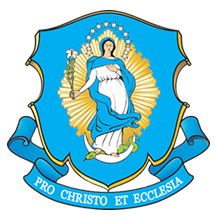
By Kimberly Bruce
Pope Benedict XVI called St. Teresa of Ávila (whose feast we celebrate on Oct. 15) “one of the peaks of Christian spirituality.” Noted for her writings, holiness, and reforms to the Carmelite Order, St. Teresa, a mystic who received visions from our Lord, belongs to that elite group of only four female Doctors of the Church.
Saint Teresa’s most popular work, The Interior Castle, is renowned for its description of how one’s soul can move closer to God through prayer. Her other written works are The Way of Perfection and The Book of the Foundations, both written for those in religious life. Saint Teresa also wrote many letters, penned commentaries, and was a poet.
Tears for Our Lady
She was born Teresa de Cepeda y Ahumada in 1515 in Avila, Spain, as one of 13 children. Having lost her mother when she was but 12, she said, “I was very much afflicted; and so I went before an image of our Blessed Lady and besought her with many tears that she would vouchsafe to be my mother.”
In her teen years, Teresa became interested in worldly things such as fashion and romantic tales. It was during her time at an Augustinian convent in Avila when she began to reevaluate her priorities. Discerning a lifelong vocation to the religious life, she entered the Carmelite Convent of the Incarnation, near Avila, when she was 20.
Frequently ill throughout most of her life, St. Teresa often neglected her prayer life. Realizing her fault, she said, “This excuse of bodily weakness was not a sufficient reason why I should abandon so good a thing, which required no physical strength, but only love and habit. In the midst of sickness the best prayer may be offered, and it is a mistake to think it can only be offered in solitude.”
Extraordinary graces
Saint Teresa was the recipient of supernatural visions from our Lord, beginning early in her convent years. Some of her spiritual directors believed her experiences to be from God. Others, however, including her religious sisters, mocked, derided, and slandered her.
Known to at times levitate in prayer, she stated, “God seems not content with drawing the soul to Himself, but he must needs draw up the very body too, even while it is mortal and compounded of so unclean a clay as we have made it by our sins.”
She also witnessed a vision of an angel who thrust a fiery dart through Teresa’s heart, and then removed it. After, Teresa said, she was left “wholly on fire with a great love of God.” Her ecstacy inspired one of the greatest sculptures of Gian Lorenzo Bernini (above), in the church of Santa Maria della Vittoria in Rome
Her devout prayers even brought her young nephew’s lifeless body back to life after he had been crushed by a wall that fell upon him.
A new community
Saint Teresa longed for a more structured environment than 16th-century convent life in Spain afforded her. Rules were lax, and visitors frequented the nuns’ parlor for social visits. She wished to open a convent with a more disciplined way of life.
When news of her desire for this convent was made known, St. Teresa endured much persecution from those vehemently opposed to stricter rule. Finally, the bishop appointed her prioress of a new convent, and she was known henceforth as Teresa of Jesus, mother of the reform of Carmel.
Strictly cloistered, with rules of poverty and silence, they were called “discalced” (shoeless) nuns because they did not wear shoes as part of their vow of poverty. Seventeen other convents were established by her, too, including some for men. She was aided by St. John of the Cross and St. John of Ávila, with whom she developed close spiritual friendships. Saint John of the Cross helped her open several of the monasteries and was made director and confessor of the motherhouse in Avila.
Her legacy continues
“For Teresa,” said Pope Benedict, one’s Christian life culminates when in union with Jesus “through grace, love, and imitation.” He stated she lived out her “unconditional love for the Church” by serving and defending her in the face of divisions and conflicts.
Saint Teresa passed away in 1582 at the age of 67. She was canonized by Pope Gregory XV in 1622 and proclaimed a Doctor of the Church by Pope St. Paul VI in 1970.
Saint Teresa of Ávila, Doctor of the Church, pray for us!
{shopmercy-ad}
















